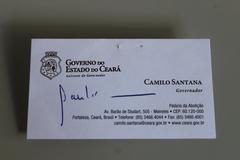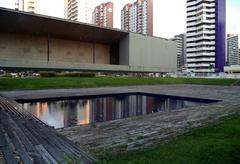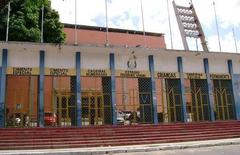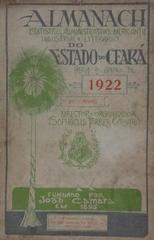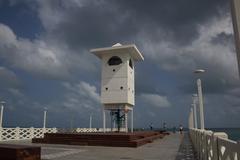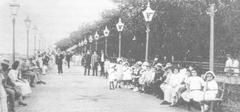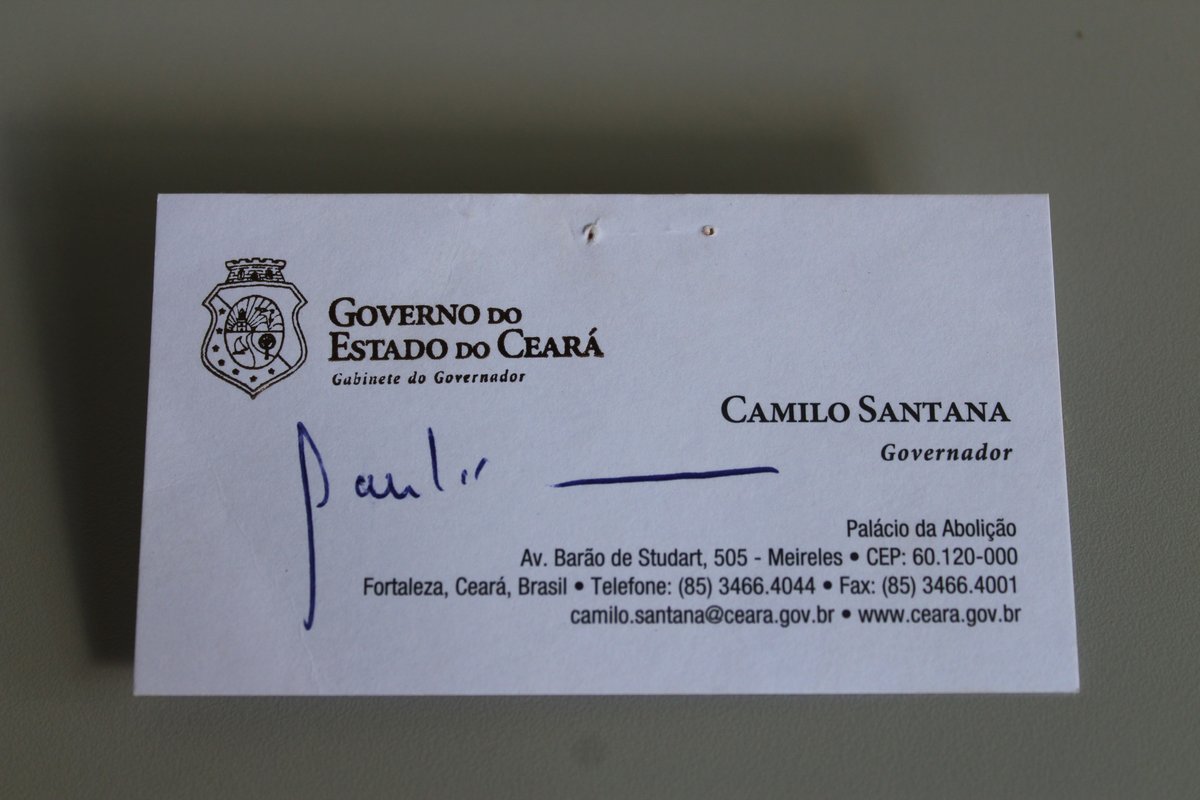
Abolition Palace Fortaleza: Visiting Hours, Tickets, and Travel Guide
Date: 15/06/2025
Introduction
The Abolition Palace (Palácio da Abolição) in Fortaleza, Ceará, is a landmark of immense historical and cultural significance. As the official seat of the Ceará state government, it stands as a powerful symbol of Brazil’s abolitionist history, commemorating both the Lei Áurea (Golden Law) of 1888 that ended slavery in Brazil and Ceará’s pioneering abolition in 1884. Blending modernist architecture with a vibrant civic role, the palace is not only a site of political decision-making but also a venue for cultural events, exhibitions, and public engagement. This comprehensive guide covers everything you need to know about visiting the Abolition Palace, including its history, architecture, visiting hours, ticket policies, accessibility, and nearby attractions.
For the latest information and updates, consult official resources and authoritative travel sites such as BBC News, Brazil Explained, and Hotel-Mix.in.
Table of Contents
- Introduction
- Historical Context and Cultural Significance
- Architecture and Symbolism
- Visiting Information: Hours, Tickets, and Accessibility
- Getting There and Travel Tips
- Nearby Attractions and Amenities
- Visitor Experience: What to Expect
- Frequently Asked Questions (FAQ)
- Conclusion & Planning Resources
- References
Historical Context and Cultural Significance
The Abolitionist Movement in Brazil
Brazil was the last country in the Western Hemisphere to abolish slavery, formally ending the practice in 1888 with the signing of the Lei Áurea (BBC News). The abolitionist movement was a prolonged struggle involving intellectuals, religious leaders, activists, and the enslaved population itself. Public demonstrations, fundraising efforts, and abolitionist societies flourished, particularly in urban hubs like Fortaleza (DailyHistory.org).
Fortaleza’s Leadership in Abolition
Ceará distinguished itself as the first Brazilian province to abolish slavery in 1884, four years before national abolition (NYK Daily). Fortaleza became a focal point for abolitionist activity, hosting rallies, clubs, and campaigns to emancipate enslaved people. This proactive stance not only set a precedent for the rest of the country but also shaped the state’s progressive identity.
Symbol of Social Justice and Civic Engagement
Even after abolition, the newly freed population faced ongoing discrimination and social inequality (Discover Walks). The Abolition Palace continues to serve as a venue for commemorations, educational programs, and events that highlight the ongoing struggle for racial equality and human rights.
Architecture and Symbolism
Modernist Design
Constructed in the late 1950s and inaugurated in 1970, the Abolition Palace is a striking example of Brazilian modernist architecture, influenced by the likes of Oscar Niemeyer and Lúcio Costa (ArchitectureLab.net). The palace features geometric lines, reinforced concrete, wide glass façades, and brise-soleil louvers for sun protection—elements designed to harmonize with Fortaleza’s tropical climate.
Functional and Symbolic Spaces
The building’s symmetrical layout includes ceremonial halls, open courtyards, and reflecting pools that blend interior and exterior spaces, emphasizing transparency and openness. These architectural choices reflect the palace’s dual role as both a seat of government and a symbol of freedom and progress.
Visiting Information: Hours, Tickets, and Accessibility
Visiting Hours
- Exterior and Gardens: Open to the public at all times.
- Interior Access: Available only during special events, guided tours, or official cultural programming. These are typically announced on Ceará government or tourism websites.
Tickets
- General Admission: There is no charge for visiting the palace’s gardens or viewing its façade.
- Guided Tours/Special Events: Free or ticketed, depending on the event. Booking in advance is recommended during festivals and public holidays.
Accessibility
- Physical Access: The palace grounds are mostly accessible, with ramps and wide pathways. Accessibility inside the building may vary and should be confirmed ahead of special events or tours.
- Visitor Services: Staff are available to assist visitors with disabilities. Notify in advance for special accommodations.
Getting There and Travel Tips
Location
Abolition Palace is centrally located in Fortaleza, near the Meireles and Iracema neighborhoods, a short walk from Avenida Beira Mar and the city’s urban beaches (Booking.com).
Transportation
- Taxi/Uber: Widely available and recommended for comfort and ease (Travel Passionate).
- Public Transport: Several bus lines run along Avenida da Abolição.
- On Foot: Walking is convenient from nearby neighborhoods.
Best Times to Visit
- Climate: Visit during the dry season (August–November) for the best weather (Weather and Climate).
- Events: Check for cultural festivals or commemorations when the palace may offer interior tours or special programming.
Safety and Etiquette
- Safety: Standard urban precautions apply. Avoid isolated areas after dark and keep valuables secure (Wild Trips).
- Photography: Exterior photography is encouraged. For interior visits during events, request permission before photographing.
- Dress Code: Casual attire is suitable for exterior visits; dress modestly for official events.
Nearby Attractions and Amenities
- Beira Mar Avenue: Beachfront promenade with markets and dining (BiteSize Brazil).
- Iracema Beach: Known for nightlife and cultural activities.
- Metropolitan Cathedral: A neo-Gothic landmark (Travel Passionate).
- José de Alencar Theatre: Historic venue for arts and performances (TripHobo).
- Ceará Image and Sound Museum, CEART Handicraft Exposition: Enhance your cultural itinerary (Adults Only Guide Fortaleza).
Accommodation
Options range from luxury to budget hotels within walking distance, such as Hotel Gran Marquise and Hotel Luzeiros Fortaleza (Booking.com).
Dining
Avenida Beira Mar features a wide selection of seafood restaurants and regional cuisine.
Visitor Experience: What to Expect
- Guided Tours: Available during special events, usually in Portuguese with occasional English options.
- Educational Value: Informational panels and exhibitions provide context on the abolitionist movement and Ceará’s cultural heritage.
- Photography: Best in the morning for optimal lighting; the gardens and façade are popular photo spots.
- Facilities: Restrooms and parking may be limited; nearby hotels and restaurants provide additional amenities.
Frequently Asked Questions (FAQ)
Q: What are the Abolition Palace visiting hours?
A: The gardens and exterior are accessible at all times. Interior access is limited to special events or guided tours.
Q: Is there an entrance fee?
A: No, there is no charge for visiting the exterior or gardens. Special events may require tickets.
Q: Are guided tours available?
A: Yes, during selected dates and events—check official sources for schedules.
Q: Is the palace accessible for people with disabilities?
A: Most of the grounds are accessible; confirm details for interior access in advance.
Q: What nearby attractions can I visit?
A: Beira Mar Avenue, Iracema Beach, Metropolitan Cathedral, José de Alencar Theatre, and more.
Conclusion & Planning Resources
The Abolition Palace is a cornerstone of Fortaleza’s historical and cultural landscape, embodying the region’s groundbreaking role in the abolition of slavery and its ongoing commitment to social justice. While daily interior access is limited due to government functions, the palace’s gardens and exterior remain open for all to admire. Special events and guided tours offer deeper insights into its history and architecture.
For up-to-date Abolition Palace visiting hours, ticket information, and event schedules, always consult official government and tourism websites. Enhance your visit by exploring nearby attractions, and consider using the Audiala app for real-time travel tips and guided tours.
References
- BBC News
- DailyHistory.org
- NYK Daily
- Hotel-Mix.in
- Discover Walks
- ArchitectureLab.net
- Adults Only Guide Fortaleza
- Brazil Explained
- Brazil Travel Net
- Best Pub Crawl
- Booking.com
- Travel Passionate
- Wikipedia
- Wild Trips
- BiteSize Brazil
- TripHobo
Download the Audiala app for updated visiting information, guided tours, and exclusive content about the Abolition Palace and other Fortaleza attractions. Stay connected on our social channels for more travel tips and cultural insights.
